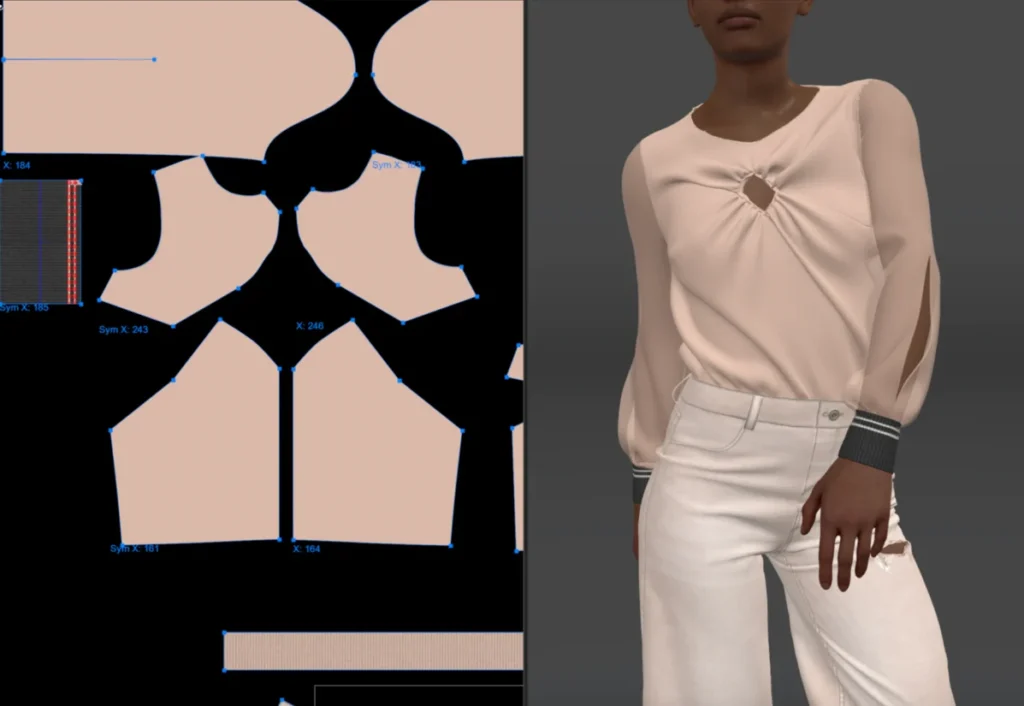Introduction
The fashion industry is a dynamic and ever-evolving space where creativity meets functionality. Bringing a concept to life requires meticulous planning, precise execution, and a keen understanding of the garment development process. One of the most crucial steps in this journey is creating an apparel prototype. But what exactly is an apparel prototype, and why does it play such a pivotal role in the fashion world?
This guide will take you through the ins and outs of apparel prototyping, from its significance in design refinement to its impact on production efficiency. Whether you’re a budding designer or an established fashion brand, mastering apparel prototyping can save you time, reduce costs, and ultimately lead to a better product.
What is an Apparel Prototype?
Definition of Apparel Prototype
An apparel prototype is the initial physical sample of a clothing design, created to evaluate the garment’s fit, fabric, functionality, and overall aesthetics before moving to full-scale production. It acts as a visual and tangible representation of a designer’s vision, allowing necessary modifications and enhancements before finalizing the design.
Importance of Apparel Prototypes in the Fashion Industry
In the competitive fashion industry, apparel prototypes serve as a bridge between creativity and practicality. They allow designers to test innovative designs, experiment with materials, and refine construction techniques. Prototypes also help brands prevent costly production mistakes by identifying issues early in the development process.
The Process of Creating Apparel Prototypes
Design Concept Development
Every successful apparel prototype begins with a well-thought-out design concept. This phase involves brainstorming ideas, sketching designs, and creating digital renderings using fashion design software like Adobe Illustrator or CLO 3D. Designers must consider not just aesthetics but also wearability, functionality, and target audience preferences.
Pattern Making
Once the design is finalized, the next step is pattern making. Patterns act as blueprints for constructing the garment and must be created with precision. Traditional hand-drawn patterns and digital pattern-making software such as Optitex or Gerber AccuMark help ensure accuracy. The goal is to translate a two-dimensional sketch into a structured piece that fits the human form flawlessly.
Fabric Selection
Fabric choice is crucial in apparel prototyping. A design that looks perfect on paper may not translate well if the wrong material is used. Factors such as fabric stretch, weight, drape, and durability all play a role in the final product. Designers often test different fabrics to find the best match, ensuring the prototype meets both aesthetic and functional requirements.
Sample Production
After pattern making and fabric selection, the first prototype sample is created. This involves cutting, stitching, and assembling the garment according to the specifications. At this stage, designers evaluate key factors such as seam placement, stitch quality, and how the fabric reacts to movement. If necessary, multiple iterations of the prototype may be produced until the design meets the desired standard.
Benefits of Apparel Prototypes
Allows for Design Tweaks and Adjustments
One of the biggest advantages of prototyping is the ability to refine designs before mass production. Small design flaws can be corrected early, saving time and money. Designers can test different necklines, sleeve lengths, or embellishments to ensure the garment meets aesthetic and practical needs.
Helps in Testing Fabric Quality and Fit
A prototype allows for real-life testing of fabric quality and fit. Does the fabric shrink after washing? Does it wrinkle easily? Is it comfortable against the skin? These are crucial questions that can be answered during the prototyping phase. By assessing how the garment interacts with different body types, brands can minimize return rates and improve customer satisfaction.
Facilitates Communication with Manufacturers
A well-executed prototype serves as a clear reference for manufacturers. Instead of relying solely on sketches or digital designs, having a physical prototype ensures the production team understands every detail, from stitching techniques to fabric layering. This reduces miscommunication and enhances production efficiency.
Enhances Sustainability in Fashion
With sustainability becoming a top priority in the fashion industry, apparel prototypes contribute to more responsible production practices. By perfecting a design before mass production, brands reduce fabric waste, minimize defective products, and lower environmental impact. Many sustainable brands also use digital prototyping to reduce sample waste.
Common Mistakes to Avoid in Apparel Prototyping
Rushing the Prototype Process
One of the biggest mistakes designers make is rushing through the prototype phase. Skipping steps or settling for a subpar sample can lead to production disasters. Taking the time to perfect each iteration ensures a well-made final product that meets industry standards.
Ignoring Feedback from Testers
Feedback from real users is invaluable. Fitting sessions with models, test wearers, or focus groups can provide insights into comfort, durability, and practicality. Ignoring this input can result in garments that look great but fail to perform in real-world scenarios.
Not Considering Production Costs
Designing an intricate prototype that cannot be mass-produced cost-effectively is a common pitfall. Material availability, production feasibility, and labor costs must all be considered during prototyping. A design that is too expensive to manufacture at scale may not be commercially viable.
Overlooking Functionality and Wearability
Fashion is not just about aesthetics—it’s about how a garment feels and functions in everyday life. Prototypes should be tested in real-life scenarios to ensure they meet the demands of consumers. For example, activewear should be tested for breathability and movement, while outerwear should be assessed for insulation and durability.
Conclusion
Apparel prototyping is a crucial step in the fashion production process. It allows designers to refine their vision, test fabric quality, and ensure the garment’s fit before full-scale manufacturing. By investing time and resources into prototyping, brands can improve product quality, reduce production errors, and create a more sustainable fashion future. Whether you are an independent designer or a major fashion label, mastering the art of apparel prototyping will set you apart in the industry.
Common Questions
1. What is the purpose of creating apparel prototypes?
Apparel prototypes help designers visualize, test, and refine their designs before mass production, ensuring high quality and reducing potential errors.
2. How can apparel prototypes help improve the quality of the final product?
Prototypes allow designers to test fabric choices, refine fit, and make necessary adjustments, leading to a better-quality final product.
3. What are some key considerations when creating apparel prototypes?
Key factors include selecting the right fabric, precise pattern making, incorporating user feedback, ensuring production feasibility, and maintaining functionality and comfort.
With careful attention to each stage of prototyping, brands can produce garments that are not only visually appealing but also functional, comfortable, and cost-effective. Mastering apparel prototyping is not just a technical necessity—it’s an art that shapes the future of fashion.

